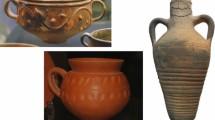Abstract
A new method for secondary features segmentation, performed on high-density tessellated geometric models, is proposed. Four types of secondary features are considered: fillets, rounds and grooves. Sharp edges are also recognised. The method is based on an algorithm that analyses the principal curvatures. The nodes, potentially attributable to a fillet of given geometry, are those with a certain value for the maximum principal curvature. Since the deterministic application of this simple working principle shows several problems, due to the uncertainties in the curvature estimation, a fuzzy approach is proposed. In order to segment the nodes of a tessellated model belonging to secondary features of a given radius, an appropriate set of membership functions is defined and evaluated based on some parameters, which affect the quality of the curvature estimation. A region-growing algorithm connects the nodes pertaining to a same secondary feature so that, for a given radius, one or more secondary features may be recognized. The method is applied and verified in some test cases.











Similar content being viewed by others
References
Bianconi, F., Di Stefano P.: An intermediate level representation scheme for secondary features recognition and B-rep model simplification. In: Proceedings—SMI 2003: Shape Modeling International, pp. 99–108 (2003)
Di Angelo L., Di Stefano P., Morabito A.E.: Automatic evaluation of form errors in high-density acquired surfaces. Int. J. Prod. Res. 49(7), 2061–2082 (2011), ISSN: 0020-7543
Di Stefano, P., Bianconi, F., Di Angelo, L.: An approach for feature semantics recognition in geometric models. Comput. Aided Des. 36(10), 993–1009 (2004)
Sheen, D.P., Son, T.G., Myung, D.K., Ryu, C., Lee, S.H., Lee, K., Yeo, T.J.: Transformation of a thin-walled solid model into a surface model via solid deflation. Comput. Aided Des. 42(8), 720–730 (2010)
Zhao, L., Tong, R., Dong, T., Dong, J.: B-rep model simplification for feature suppressing using local error evaluation. In: IEEE (2005). doi:10.1109/CSCWD.2005.194282
Hariya, M., Nonaka, N., Shimizu, Y., Konishi, K., Iwasaka, T.: Technique for checking design rules for three-dimensional CAD data. In: IEEE (2010). doi:10.1109/ICCSIT.2010.5565010
Otani, K.: Automatic FEM mesh generation of 3D mid-surface and solid CAD model with shape recognition technique. SAE Technical Papers (2016). doi:10.4271/2016-01-1382
Cheng, Y., Liu, X., Ni, Z.: Selectively inhibition and recognition treatment strategy of fillet oriented to manufacturing. J. Southeast Univ. (Natural Science Edition) 40(4), 731–735 (2010)
Chen, Z., Yu, G., Zhang, Y.: Fillet recognition and suppression in CAD model based on feature chain (ring). China Mech. Eng. 22(22), 2707–2711 (2010)
Li, B., Liu, J.: Detail feature recognition and decomposition in solid model. Comput. Aided Des. 34(5), 405–414 (2002)
Cui, X., Gao, S., Zhou, G.: An efficient algorithm for recognizing and suppressing blend features. Comput. Aided Des. Appl. 1(1–4), 421–428 (2004)
Joshi, N., Dutta, D.: Feature simplification techniques for freeform surface models. J. Comput. Inf. Sci. Eng. 3(3), 177–186 (2003)
Zhu, H., Menq, C.H.: B-rep model simplification by automatic fillet/round suppressing for efficient automatic feature recognition. CAD Comput. Aided Des. 34(2), 109–123 (2002)
Jiao, X., Alexander, P.J.: Parallel feature-preserving mesh smoothing. In: Proceedings of International Conference on Computational Science and Its Applications, pp. 1180–1189 (2005)
Petitjean, S.: A survey of methods for recovering quadrics in triangle meshes. ACM Comput. Surv. 2(34), 1–61 (2002)
Di Angelo, L., Di Stefano, P.: Experimental comparison of methods for differential geometric properties evaluation in triangular meshes. Comput. Aided Des. Appl. 8(2), 193–210 (2011)
Di Angelo, L., Di Stefano, P.: C1 continuities detection in triangular meshes. Comput. Aided Des. 42(9), 828–839 (2010)
Di Angelo, L., Di Stefano, P.: Geometric segmentation of 3D scanned surfaces . Comput. Aided Des. 62, 44–56, ISSN: 0010-4485, 2015
Cox, E.: The Fuzzy Systems Handbook. AP Professional, Cambridge (1994)
Author information
Authors and Affiliations
Corresponding author
Rights and permissions
About this article
Cite this article
Di Angelo, L., Di Stefano, P. & Morabito, A.E. Secondary features segmentation from high-density tessellated surfaces. Int J Interact Des Manuf 12, 801–809 (2018). https://doi.org/10.1007/s12008-017-0426-8
Received:
Accepted:
Published:
Issue Date:
DOI: https://doi.org/10.1007/s12008-017-0426-8




